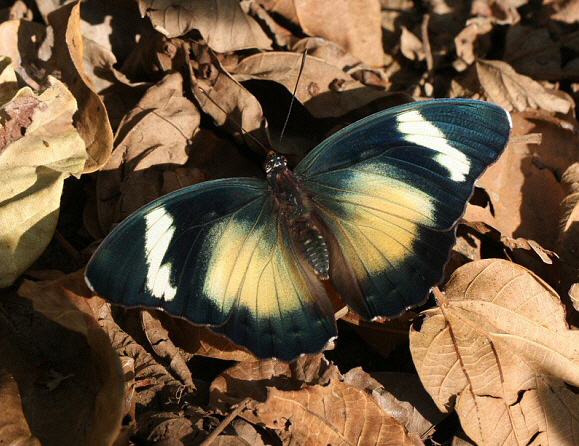
Introduction
The genus Euphaedra comprises of a yet to be discerned number of large and very beautiful forest-dwelling butterflies, all found on the African continent. In 1997 Hecq revised the genus and at that time listed a total of 180 species. This figure is challenged by other workers who believe that many of these are merely local forms or subspecies. However in 2012 Hecq produced a further revision of the eleus species-group, describing an additional 12 species, bringing the total in the genus to 192. When working in the field it is immediately obvious that there are a huge number of specimens that are noticeably dissimilar to any of the insects illustrated by Hecq but it is unclear whether these are examples of intra-specific variation, distinct taxa or hybrids.
All Euphaedra species share a common wing shape. Most have a similar pattern on the upperside – typically the basal areas of the wings ( particularly the hindwings ) have large suffused patches of metallic blue, green, orange or red. Most species also have a cream or orange sub-apical bar. The undersides are usually some shade of yellow or green, marked with black spots and streaks that vary in intensity and configuration according to taxon and locality. Many species including janetta and sarcoptera also have beautiful pink patches or streaks on the underside hindwings.
Euphaedra neumanni is found in s.w. Ethiopia and southern Sudan.
Habitats
This species is found in forest ant altitudes between about 800-1500m.
Lifecycle
This appears to be unknown.
Adult behaviour
As with other Euphaedra species this butterfly likes to bask in areas of dappled sunlight, where it can be seen basking on leaf litter, or feeding on decomposing fruits on the forest floor.
